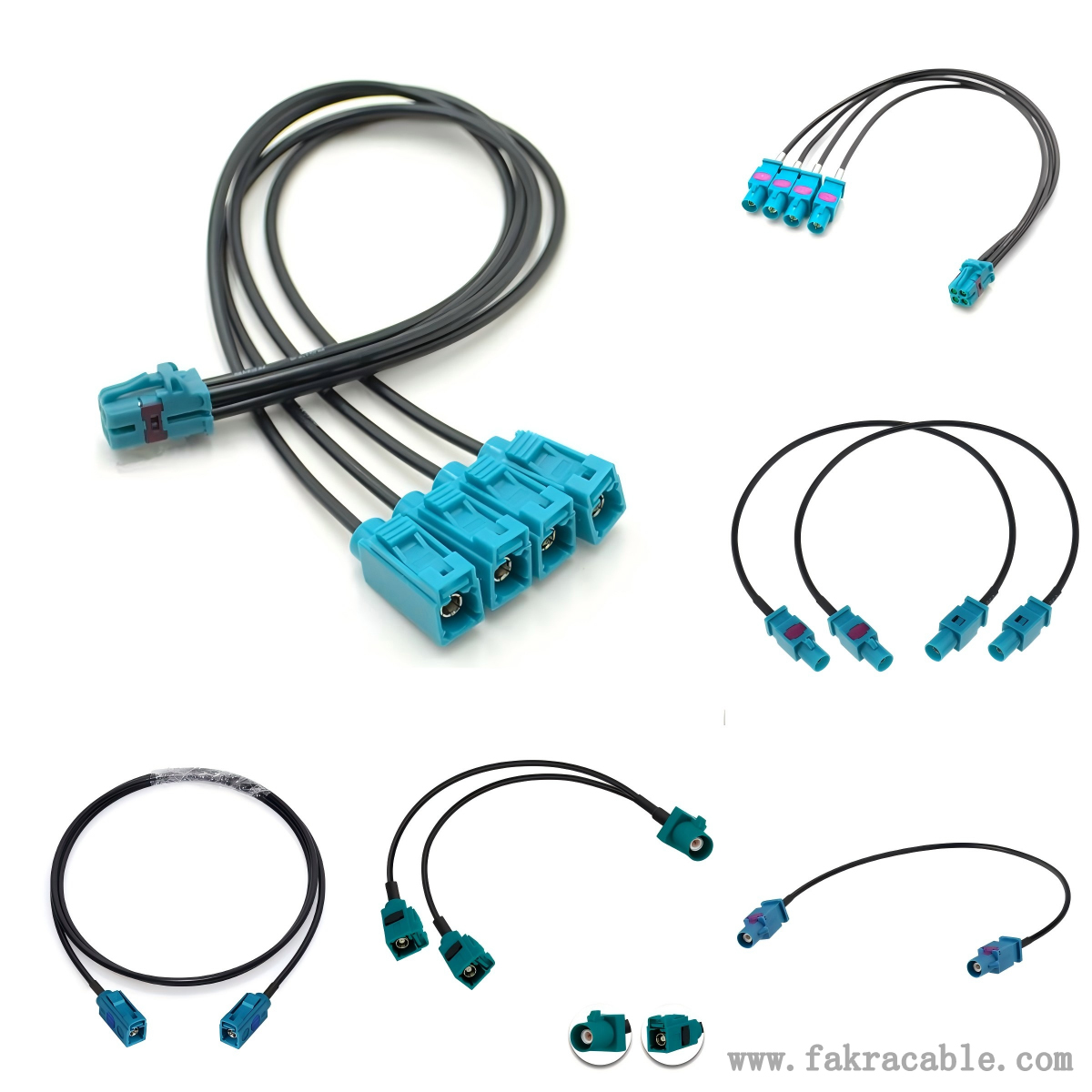What is the working principle of Fakra cable?
The working principle of Fakra cable is mainly based on the signal transmission characteristics of coaxial cable and the special design of Fakra connector. The following is a specific introduction:
The signal transmission principle of coaxial cable
Structural foundation: The coaxial cable in Fakra cable consists of an inner conductor, insulation layer, outer conductor (shielding layer), and sheath layer. This structure provides a stable physical basis for signal transmission, with the inner conductor used for signal transmission, the insulation layer separating the inner conductor from the outer conductor, the outer conductor acting as a shield, and the sheath layer protecting the entire cable structure.
Electromagnetic induction and transmission: When electrical signals such as radio frequency signals or high-definition camera signals are loaded onto the inner conductor, an alternating electromagnetic field is generated around the inner conductor. According to the principle of electromagnetic induction, this alternating electromagnetic field will propagate in the space between the insulation layer and the outer conductor. Due to the presence of the insulation layer, the electromagnetic field is mainly concentrated in this specific space, reducing signal leakage and interference with the outside world. At the same time, the outer conductor can effectively shield external electromagnetic interference, keeping the signals transmitted internally relatively pure, thereby achieving stable signal transmission.
Characteristic impedance matching: Coaxial cables have specific characteristic impedances, commonly including 50 Ω and 75 Ω. In order to ensure non reflective transmission of signals, it is required that the input and output impedance of devices connected to the cable (such as Fakra connectors, electronic devices, etc.) match the characteristic impedance of the cable. When impedance matching occurs, the signal can be transmitted smoothly in the cable, reducing signal reflection and loss. Otherwise, the signal will reflect at mismatched points, resulting in a decrease in signal quality and issues such as ghosting and interference.

The working principle of Fakra connector
Mechanical and electrical connections: The main function of Fakra connectors is to achieve reliable connections between Fakra cables and other devices such as car antennas, radios, cameras, etc. From a mechanical perspective, it ensures that the connection will not loosen even under vibration and impact during vehicle operation through its unique plug-in design and secondary locking mechanism. From an electrical perspective, the metal contacts inside the connector can form good electrical connections with the inner and outer conductors of the cable, allowing signals to be transmitted smoothly between the cable and the equipment.
Signal conversion and adaptation: In some cases, Fakra connectors may also have signal conversion and adaptation functions. For example, when connecting different types of devices or components with different interface standards, connectors may perform signal processing such as level conversion, impedance transformation, etc. to ensure that signals can be transmitted correctly and compatible between different devices.
In short, Fakra cables achieve efficient signal transmission through the special structure and electromagnetic characteristics of coaxial cables. With the precise design of Fakra connectors, reliable connections and signal adaptation with other devices are achieved, providing stable and efficient transmission channels for various RF signals and high-definition signals in fields such as automotive electronics.
Contact: Mandy He
Phone: 15170973126
E-mail: obdwire@126.com
Whatsapp:
Add: 2nd Floor, Building 14, Aviation Science and Technology Innovation Area A, Nanchang Gaoxin Zone, Nanchang, China
We chat
